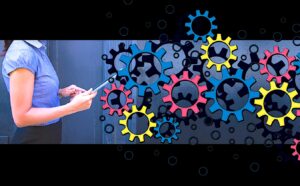By Jason Bloomberg
In the fall of 2019, the information technology industry analysis firm Gartner announced its top 10 strategic technology trends for 2020. At the top of the list: hyperautomation. Now that it’s 2021, has hyperautomation lived up to its hype?
Gartner defines hyperautomation as “an effective combination of complementary sets of tools that can integrate functional and process silos to automate and augment business processes.” Among the tools in this combination: robotic process automation or RPA, process discovery, process mining, intelligent business process management systems or iBPMS, low-code and business rules engines.
Such a motley list of older and newer product categories generally leaves both enterprise process leaders and software vendors scratching their heads. Is Gartner really recommending that companies purchase several process tools with the hopes of somehow getting them to work together? Why is RPA just one item on the list, when RPA has taken the enterprise automation market by storm? And perhaps most perplexing: How can Gartner consider such a shopping list of tools strategic?
I spoke to a number of automation tooling leaders to get their take on the buzz around hyperautomation. Is this trend for real or just hype? What’s the real story?



